Multidisciplinary design optimization of large rectangle collimating mirror lightweight structure
-
摘要: 在极大望远镜宽视场光谱仪准直镜结构轻量化研究中,实施多学科多目标优化的可行性设计。通过多目标遗传算法结合多学科协同对准直镜轻量化结构进行优化设计,即以镜面形状要素为优化参数、镜面面型和质量为目标,并借助遗传算法为优化算法获取Pareto最优解。对比研究了不同轻量化孔轻量化后综合性能和轻量化后准直镜的热稳定性,三角型轻量化后准直镜轻量化率为70%,PV值为82.696 nm; 矩形轻量化孔准直镜轻量化率为75.3%,PV值约为107.03 nm; 准直镜环境温度变化为10 K时,准直镜形变约增加一倍。研究结果表明:三角形轻量化孔综合评价优于矩形孔; 准直镜结构轻量化多目标优化设计全面考虑了准直镜结构轻量化、轻量化孔形状要素和光学面型形变等多学科之间耦合问题,设计者可按需选择全局范围内最满意的最优解,这将大幅度降低开发成本和周期。Abstract: Multidisciplinary and multi-objective optimization design method was applied in the researches of collimator mirror lightweight of wide field spectrometer of extremely large telescope. Lightweight design was operated independently on the basis of collaborative optimization which is one of the best feasible multidisciplinary design optimization approaches combined with multi-objective genetic algorithm to carry out the optimization, and the Pareto optimal set was obtained. The lightweight performance with different lightweight holes and the thermal stability of light-weighting collimator mirrors were comparatively studied. With triangle lightweight hole of collimation mirror, the light weighting rate is about 70% and the peak-valley (PV) value is 82.696 nm. With rectangle lightweight hole of collimation mirror, the light weighting rate is about 75.3% and the PV value is 107.03 nm. When the temperature of the collimator mirror changes about 10 K, the deformation of the collimator mirror is added doubled. The results indicate that the comprehensive evaluation of triangle lightweight hole is better than rectangle holes; the coupling and interdisciplinary relationships among the lightweight, the lightweight hole shape parameter and the deformation of mirror are comprehensively considered during the multi-objective optimization of collimator mirror lightweight structure. Thus the designers can choose the satisfactory optimization results according to their demands, so as to significantly reduce the product development cycle and costs.
-
引言
望远镜通光口径的大小决定其观测分辨力的高低,随着对空间目标观测分辨力要求的提高,地基望远镜的主镜口径越来越大[1-2]。随着科学技术进步和发展,20世纪90年代,一批代表着最先进技术的8 m~10 m级光学和红外望远镜相继建成,其中的典型代表有美英加等多国合作的双子座望远镜(Gemini),欧洲南方天文台的甚大望远镜(VLT),日本的昂星团望远镜(Subaru),美国的10 m级拼接式望远镜凯克(包括Keck I和Keck II)[3]。为了追求更高分辨本领,国际上一大批学者开始筹建和研究巨型地基天文光学望远镜,如加州理工大学的30 m望远镜(TMT),加拿大的20 m望远镜(VOLT),日本国家天文台30 m望远镜(JELT),美国天文光学中心的30 m望远镜(GSMT)和欧洲南方天文台(ESO)的42 m(E-ELT)和100 m望远镜COWL)[3-4],同时中国也提出了10 m地基望远镜设计和制造计划[5]。随着地基望远镜的主镜口径增大,整个系统的尺寸和质量也随之成倍增加,进而增加整个系统的造价[6-7]。为了控制成本,减小系统加工、运输和装配难度,在对望远镜和终端设备的光学元件和机械结构进行设计时,应在保证结构刚度的同时尽量做到轻量化[8]。以美国30 m望远镜(TMT)为例,其中宽视场光谱仪准直镜尺寸已接近2 m[9]。
宽视场以视场大、分辨率高和技术成熟等独特的优势成为望远镜终端仪器首选利器之一,以美国30 m望远镜宽视场光谱仪准直镜为研究目标,通过先进的全局优化方法结合仿真计算和数值模拟分析等手段对准直镜进行轻量化设计。为TMT望远镜宽视场光谱仪准直镜做技术参考的同时,也为我国未来开展12 m望远镜宽视场光谱仪研制提供技术手段和经验积累。
1 多目标优化问题及求解
1.1 多目标优化问题
多目标优化问题就是在可行域中确定由决策变量组成的矢量,使得一组相互冲突的目标函数值尽量同时达到极小。用如下的数学模型描述:
$$ \begin{aligned} &\min F(x)=\left(F_{1}(x), F_{2}(x), \cdots, F_{n}(x)\right)^{\mathrm{T}}\\ &\text { s. t. } \quad g_{i}(x) <C 1, i=1, 2, \cdots, m\\ &h_{i}(x)=C 2, i=1, 2, \cdots, n\\ &x_{L} \leqslant x \leqslant x_{U}, x=\left(x_{1}, x_{2}, \cdots, x_{d}\right) \end{aligned} $$ (1) 式中:F1(x), g(x)和h(x)分别为目标函数的约束函数; 参数m,n,d为函数个数; C1和C2为常量,x为决策矢量。
定义Pareto最优解:对于可行解x*∈X,当且仅当不存在另一个可行解x*∈X,使所有不等式$F_{i}(x) \leqslant F_{i}\left(x^{*}\right)(i=1, 2, \cdots, n) $成立,且至少存在一个i0, i0∈{1, 2, …, n},使严格不等式$F_{i}(x) \leqslant F_{i}\left(x^{*}\right) $成立,则称为多目标优化问题的一个Pareto最优解[10]。
多学科优化必然伴随多目标优化问题的出现。多目标优化问题最基本的特征就是存在一组相互无法进行简单比较的Pareto最优解,且Pareto解中任何一个解都可能成为最优解。
1.2 多目标问题求解
传统求解多目标优化问题的方法,如约束法、加权法、距离函数法、最小最大法等,按某种策略确定多种多目标之问的权衡方式,将多目标问题转换为多个不同的单目标优化问题,是一个标量优化问题,而多目标多学科优化则是矢量优化。多目标遗传算法具有全局搜索性能强、收敛快等优点,因此本文采用此来解决多目标优化问题。本文采用的多目标遗传算法计算流程如图 1所示。
为提高算法的运行效率,采用浮点数编码方法进行编码。群体是遗传算法进化过程的基础,从某种程度上来讲,群体的性质变化决定了遗传算法GA的搜索能力,GA的收敛性取决于群体的收敛性。为了保证具有好的全局搜索性能,初始群体应具有普遍的代表性,采用一致随机的方式选取初始群体。
遗传算法中适应度函数的选取至关重要,直接影响到遗传算法的收敛速度及能否找到最优解,由于目标函数F(x)为最小值问题,转化为最大问题有关系式:
$$ f\left(F_{1}(x)\right)=\left\{\begin{array}{cc} C_{\max }-F(x) & F(x) <C_{\max } \\ 0 & 其他 \end{array}\right. $$ (2) 式中:F(x)为目标函数; Cmax为目标函数的最大值预估; f(F1(x))为适应值[11]。
选择、交义和变异算子,它们依次作用于群体,从而产生新一代群体。为了得到更好的效果和体现浮点数编码的优势,使任意基因位的重要基因在交义作用下均可以重组,并遗传到下一代,寻找到最优基因结果。
2 准直镜轻量化设计要求及多目标优化
准直镜轻量化是一个复杂的系统工程,其设计包含多个学科,如结构设计、力学计算、光学工程和数据拟合处理等。轻量化设计既是一个涉及多个学科高度关联耦合过程,也是一个复杂的多阶段设计过程,同时也是一个反复迭代和逐渐逼近优化过程。在这种情况下用传统的单一学科单一目标优化方法难以实现结构整体综合优化,需要借助多学科优化理论和方法来解决此问题。
在美国30 m望远镜(thirty meter telescope,TMT)宽视场光谱仪中其准直镜为矩形抛物面镜(长1 600 mm,宽800 mm)。由于望远镜像旋作用,需要对宽视场光谱仪旋转以消除像旋。因此,在实际工作中准直镜需要以0.2°/min进行旋转。为了提高结构支撑可靠性,需要对准直镜进行轻量化设计,即通过降低准直镜质量来降低支撑难度。准直镜形状参数和设计要求如表 1所示。
表 1 准直镜设计要求Table 1. Design parameter requirement of collimating mirror长/mm 宽/mm 质量/kg PV值 1 600 800 <200 最小 本文基于遗传算法框架对准直镜进行优化设计,以准直镜质量和面型PV值为目标进行多目标多参数全局优化,具体设计流程如图 2所示。在设计方案中,采用集成优化分析法,将几何建模、网络划分、有限元分析和准直镜面形及质量等环节和遗传算法集成一体。该优化设计方法无需人工干预,只要设定设计结果目标,程序自动根据参数设计范围,寻找所有满足条件全局最优解,大大提高了设计效率。
3 准直镜轻量化结构的多目标优化设计3.1设计变量
准直镜镜面轻量化就是通过改进准直镜结构,使镜面内部中空化和薄壁化达到轻量化目的,同时镜面面形满足使用的性能要求。目前对大尺寸镜面进行轻量化设计主要有3种方法实现[12]:
●传统经验积累法。工人根据多年经验积累选择合适轻量化结构参数;
●经验公式法。在弹性力学基础上,早期相关专家根据实际情况总结出一套大尺寸镜面轻量化公式,根据公式设计轻量化结构;
●集成优化设计法。借助有限元等先进软件并结合先进全局优化方法对准直镜进行多科学多目标优化。
本文集成优化法对大尺寸准直镜进行轻量化设计,选择三角形孔作为轻量化孔形式,准直镜材料选择加工工艺成熟的微晶玻璃。定义了准直镜轻量化孔形状要素和支撑位置要素共计8个设计变量,如图 3所示。
3.2 轻量化结构多科学多目标优化
基于遗传算法优化的准直镜轻量化设计多目标优化问题数学模型为
$$\operatorname{Min} \quad P V\\ ~~ \mathrm{Mass} <200 ~~\mathrm{kg}\\ {\rm{st}}{\rm{.}}~~x_{i j} \leqslant x_{i} \leqslant x_{i j}(i=1, 2, \cdots, 8)$$ (3) 式中:PV为镜面在工作环境下面形的谷峰值; Mass为轻量化后准直镜质量; xi为设计目标参数; xij和xil为设计变量参数的上下限。
准直镜轻量化是两目标优化问题,利用遗传算法(GA)求解的最优Pareto解集如图 4所示。在轻量化设计中镜面质量和面型形变这2个目标是矛盾的,一个目标需要牺牲另一个目标性能作为代价。设计中可根据实际设计需求,从Pareto集选择自己满意最优解。根据图 4数据选取准直镜质量小于200 kg,PV值最小值。选取最优值面型结果如图 6所示,最小值为82.696 nm,轻量化后质量为187.7 kg,轻量化率为70%。
3.3 不同轻量化结构对比研究
由于笔者以30 m望远镜宽视场光谱仪准直镜为目标研究轻量化设计方法,准直镜为矩形结构,矩形轻量化孔是否更加适合。同样定义了准直镜轻量化孔形状要素和支撑位置要素共计8个设计变量,如图 6所示。
利用遗传算法(GA)求解的最优Pareto解集如图 7所示。根据图 8数据选取准直镜质量小于200 kg,PV值最小值。选取最优值面型结果如图 8所示,最小值为107.027 8 nm,轻量化后质量为154.75 kg,轻量化率为75.3%。
3.4 讨论
根据2种轻量化孔结果可得:三角形轻量化孔面型精度优于四边形孔; 但从去除效率来说,四边形轻量化孔优于三角形轻量化孔。从刚度角度分析,三角形轻量化孔刚度和稳定性优于四边形孔,因此,三角形轻量化孔综合条件较为合理,是一种较好的轻量化方案。
30 m望远镜宽视场光谱仪在室内环境下工作,由于占地空间较大同时常年收到环境温度影响,为此,对轻量化后的准直镜进行热稳定性分析,图 9是准直镜温度变化对镜面形变影响。由图结果显示准直镜对温度影响较大,当温度变化10℃时镜面形变大了一倍。为此在宽视场光谱仪实际工作时需要对房间进行温度控制,以降低温度载荷对光谱仪性能影响。
4 结论
本文基于多目标遗传算法开展对准直镜轻量化结构多科学多目标优化设计,通过镜面高精度拟合和协同优化方法相结合,实现多科学优化计算,提高优化效率。通过对比三角形和四边形轻量化孔轻量化结果表明,三角形轻量化孔综合评价优于矩形孔。优化后的准直镜镜面变形PV值为82.696 nm,轻量化后质量为187.7 kg,轻量化率为70%。通过对准直镜热力耦合分析,准直镜受热载荷影响较大,当温度变化10℃时镜面形变大了一倍。
-
表 1 准直镜设计要求
Table 1 Design parameter requirement of collimating mirror
长/mm 宽/mm 质量/kg PV值 1 600 800 <200 最小 -
[1] 黄欣, 沈湘衡, 叶露, 等.多光轴光学系统光轴间平行性检测仪的研制[J].应用光学, 2015, 36(1):19-23. doi: 10.5768/JAO201536.0101004 HUANG Xin, SHEN Xiangheng, YE Lu, et al. Development of testing instrument of optical-axial parallelism for multi-axial systems[J]. Journal of Applied Optics, 2015, 36(1):19-23. doi: 10.5768/JAO201536.0101004
[2] 姜海波, 赵宏超, 杨飞. TMT三镜缩比系统cradle组件结构设计与分析[J].长春理工大学学报:自然科学版, 2017, 40 (4):7-9, 13. http://d.old.wanfangdata.com.cn/Periodical/ccgxjmjxxyxb201704002 JIANG Haibo, ZHAO Hongchao, YANG Fei. Structure design and analysis for cradle of GSSMP[J]. Journal of Changchun University of Science and Technology:Natural Science edition, 2017, 40 (4): 7-9, 13. http://d.old.wanfangdata.com.cn/Periodical/ccgxjmjxxyxb201704002
[3] 傅家. TMT三镜被动支撑技术研究[D].北京: 中国科学院研究生院, 2012. http://cdmd.cnki.com.cn/Article/CDMD-80139-1013281249.htm FU Jia. Study on the passive support of TMT tertiary mirror[D]. Beijin: University of Chinese Academy of Sciences, 2012. http://cdmd.cnki.com.cn/Article/CDMD-80139-1013281249.htm
[4] 张景旭.大口径地基光电望远镜结构总体研究[D].北京: 中国科学院研究生院, 2007. ZHANG Jingxu. Study on macro-structure of large ground-based electro-optical telescope[D]. Beijing: University of Chinese Academy of Sciences, 2007.
[5] 苏定强, 中国12 m光学红外望远镜[C].武汉: 中国天文学会摘要集, 2016. SU Dingqiang. 12 meter optical infrared telescope of China[C]. Wuhan: Chinese Astronomical Society, 2016.
[6] 王富国, 杨洪波, 赵文兴, 等. 1.2m Sic主镜轻量化设计与分析[J].光学 精密工程, 2009, 17(1):85-91. http://d.old.wanfangdata.com.cn/Periodical/hwyjggc201211032 WANG Fuqiang, YANG Hongbo, ZHAO Wenxing, et al. Lightweight design and analysis of 1.2 m SiC primary mirror[J]. Optics and Precision Engineering, 2009, 17(1):85-91. http://d.old.wanfangdata.com.cn/Periodical/hwyjggc201211032
[7] 范磊, 张景旭, 吴小霞, 等.大口径轻量化主镜边缘侧向支撑的优化设计[J].光学 精密工程, 2012, 20(10):2207-2213. http://d.old.wanfangdata.com.cn/Periodical/gxjmgc201210013 FAN Lei, ZHANG Jingxu, WU Xiaoxia, et al. Optimum design of edge-lateral support for large-aperture lightweight primary mirror[J]. Optics and Precision Engineering, 2012, 20 (10):2207-2213. http://d.old.wanfangdata.com.cn/Periodical/gxjmgc201210013
[8] 李全超, 李蕾, 谭淞年, 等.大口径铝合金主反射镜设计与分析[J].应用光学, 2016, 37(3):337-341. doi: 10.5768/JAO201637.0301003 LI Quanchao, LI Lei, TAN Songnian, et al. Design and analysis for large aperture primary aluminum mirrors[J]. Journal of Applied Optics, , 2016, 37 (3), 337-341. doi: 10.5768/JAO201637.0301003
[9] OZAKI Shinobu, MIYAZAKI Satoshi, TSUZUKIi Toshihiro, et al. Polishing test of a poly-crystal calcium fluoride lens: toward the development of TMT WFOS[C]. UK: In Astronomical Telescopes + Instrumentation, 2016.
[10] 王平, 郑松林, 吴光强.基于协同优化和多目标遗传算法的车身结构多学科优化设计[J].机械工程学报, 2011, 47(2):102-108. http://d.old.wanfangdata.com.cn/Periodical/jxgcxb201102016 WANG Pin, ZHENG Songlin, WU Guangqiang. Multidisciplinary design optimization of vehicle body structure based on collaborative optimization and multi-objective genetic algorithm[J]. Journal of Mechanical Engineering, 2011, 47 (2):102-108. http://d.old.wanfangdata.com.cn/Periodical/jxgcxb201102016
[11] 李登高, 殷松峰, 凌永顺, 等.基于遗传算法的自由曲面优化设计[J].光子学报, 2014, 43(11):79-85. http://d.old.wanfangdata.com.cn/Periodical/gzxb201411014 LI Denggao, YIN Songfeng, LING Yongshun, et al. Design of freeform surface based on the genetic algorithm[J]. Acta photonica sinica, 2014, 43 (11): 79-85. http://d.old.wanfangdata.com.cn/Periodical/gzxb201411014
[12] 于跃, 李威.空间光学遥感器次镜参数化设计[J].应用光学, 2015, 36(6):836-840. doi: 10.5768/JAO201536.0601003 YU Yue, LI Wei. Design and analysis for secondary mirror of space remote sensor by parameterization methon[J]. Journal of Applied Optics, 2015, 36 (6):836-840. doi: 10.5768/JAO201536.0601003
-
期刊类型引用(4)
1. 林正煜,张继艳,孙丽婷,秦腾,曹天皓. 大面阵高分辨率三变倍双远心光学设计. 激光与红外. 2024(05): 796-803 .  百度学术
百度学术
2. 付秀华,席佩花,孟繁有,张功,张静. 多路谷物色选光学成像系统分光器件的研究. 长春理工大学学报(自然科学版). 2022(01): 1-8 .  百度学术
百度学术
3. 杜国军,王春雨,欧宗耀,王聪,胡斌. 多基准轴透射式系统装调方法. 应用光学. 2021(02): 247-254 .  本站查看
本站查看
4. 吴笑男,张瑞,王志斌,陈壮壮. 基于FP微阵列的压缩感知光谱重建研究. 应用光学. 2021(03): 436-442 .  本站查看
本站查看
其他类型引用(10)



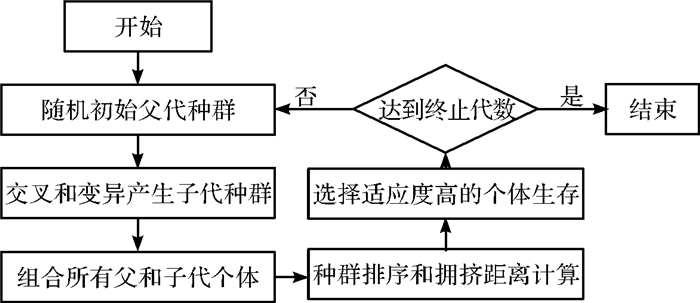
 下载:
下载:
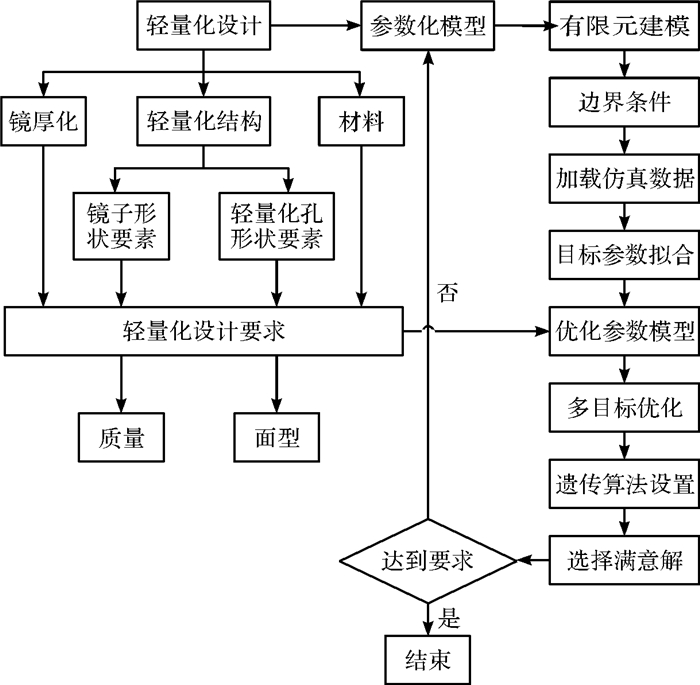
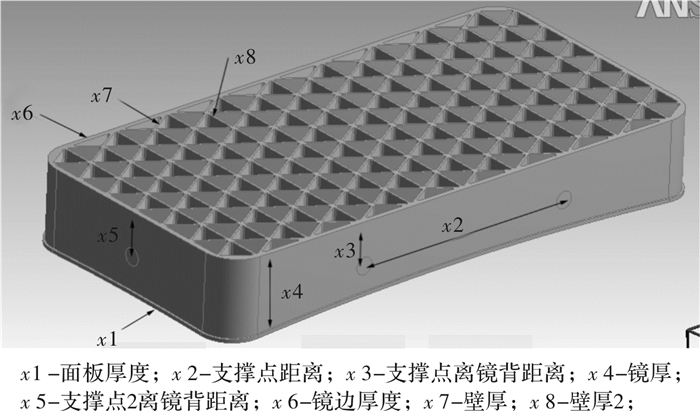
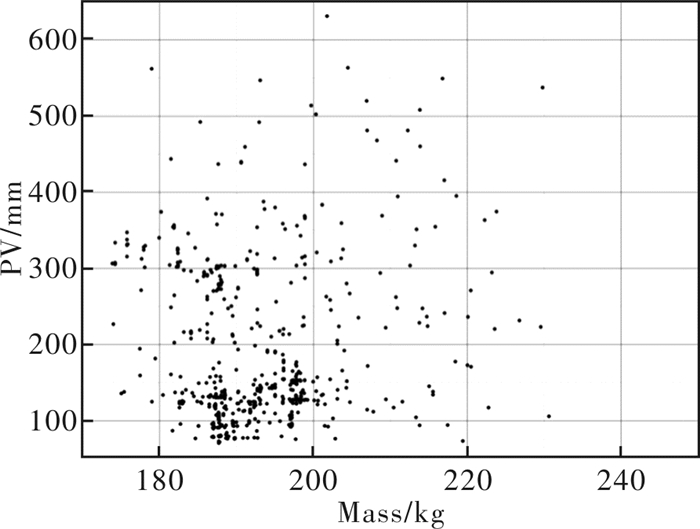
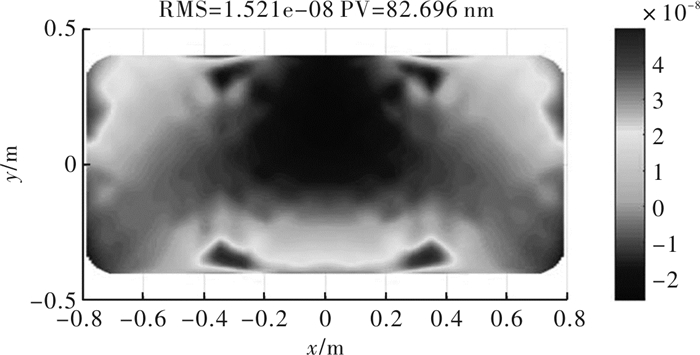
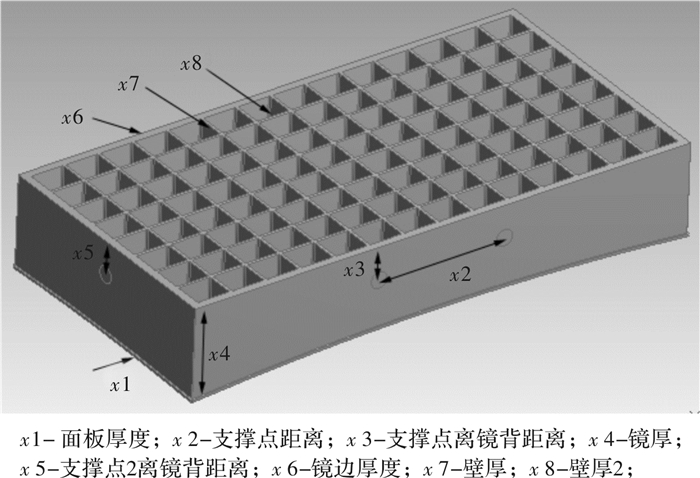
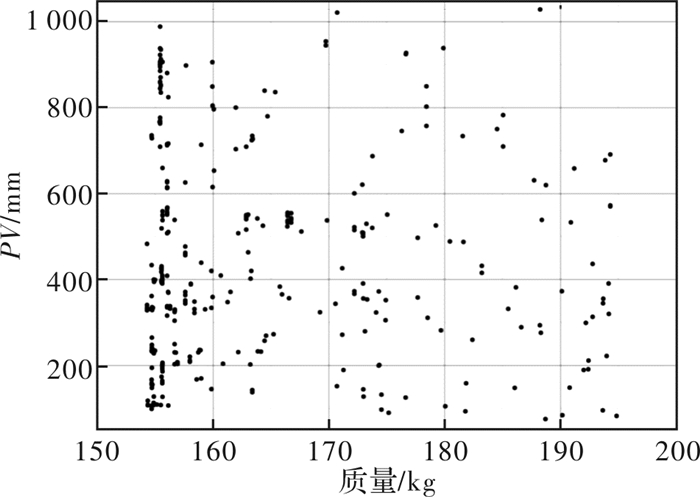

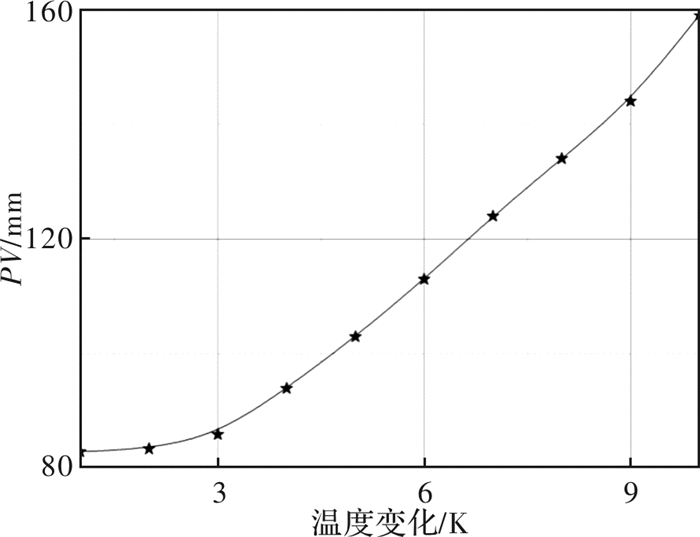

 陕公网安备 61011302001501号
陕公网安备 61011302001501号 